
iOS 17 was officially announced at WWDC and is now available to everyone, marking Apple’s biggest annual software update for iPhone users. This year, iOS 17 packs new features for Messages, FaceTime, and widgets. Head below for a roundup of our coverage, new features, details on betas and release dates, and more.
Table of contents
When was iOS 17 released to everyone?
Here’s a rundown of iOS update release dates in September:
- iOS 17: September 17, 2023
- iOS 16: September 12, 2022
- iOS 15: September 20, 2021
- iOS 14: September 16, 2020
- iOS 13: September 19, 2019
- iOS 12: September 17, 2018
iOS 17 supported devices
Notably, iOS 17 requires the A12 Bionic chip or newer. This means that the iPhone X, iPhone 8, and iPhone 8 Plus – all of which were first released in 2017 – won’t get the update this year. Here’s the full rundown of iOS 17 supported devices:
- iPhone XS and XS Max
- iPhone XR
- iPhone 11
- iPhone 11 Pro and Pro Max
- iPhone 12 and 12 mini
- iPhone 12 Pro and Pro Max
- iPhone 13 and 13 mini
- iPhone 13 Pro and Pro Max
- iPhone 14 Pro and Pro Max
- iPhone SE (2nd and 3rd gen)
What’s new in iOS 17?
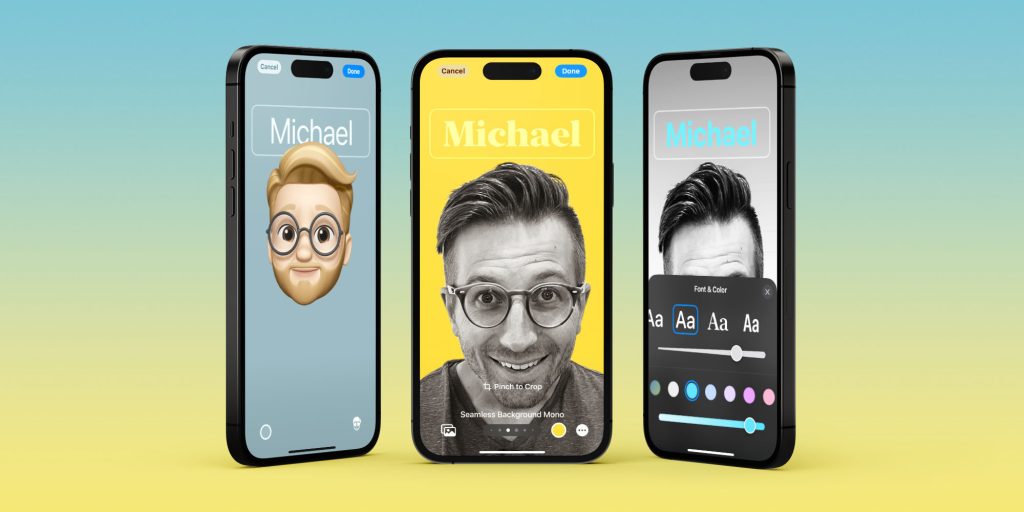
With the boring stuff out of the way, let’s dive into some of the new features in iOS 17. Apple touts that the goal of iOS 17 is to make your iPhone “more personal and intuitive,” and it has a wide array of new features to accomplish this.
iOS 17 includes a new feature called “Contact Posters,” which lets you customize how your profile appears when you interact with other iPhone users. You can set up your Contact Poster to include profile photos, special typography and font colors, and much more.
For FaceTime audio and video calls, Apple has added support for voicemails for the first time. So if you call someone, you can leave a message for them to explain why you were calling. And when they call you, they can leave their own voice mail.
Also for FaceTime, Apple has added a variety of new Reactions. This includes things like hearts, balloons, fireworks, laser beams, and rain. These effects can be activated by certain gestures and are also compatible with third-party apps.
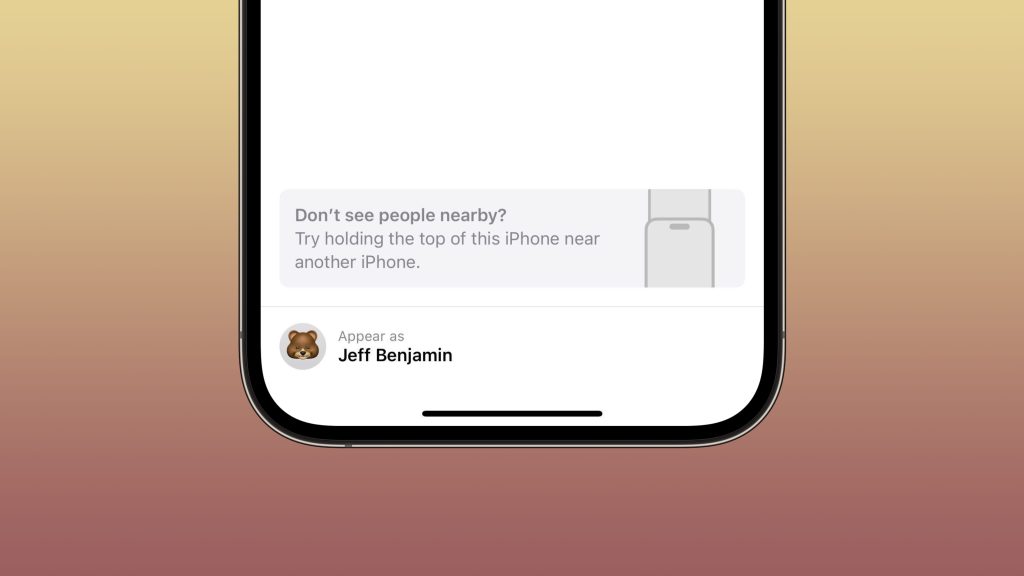
iOS 17 also packs improvements to AirDrop. For example, NameDrop is a new AirDrop feature that lets you to share your contact details with another iPhone or Apple Watch user by simply bringing your devices close to each other. Additionally, by placing two iPhones near one another, you can engage SharePlay for things like video, music, and games.
AirDrop also now supports tapping two phones together to transfer other content from one device to the other, including photos, videos, and files. Additionally, later in the year, AirDrop will introduce the ability to start transferring large files between two closely located phones, with the completion of the transfer happening via iCloud.
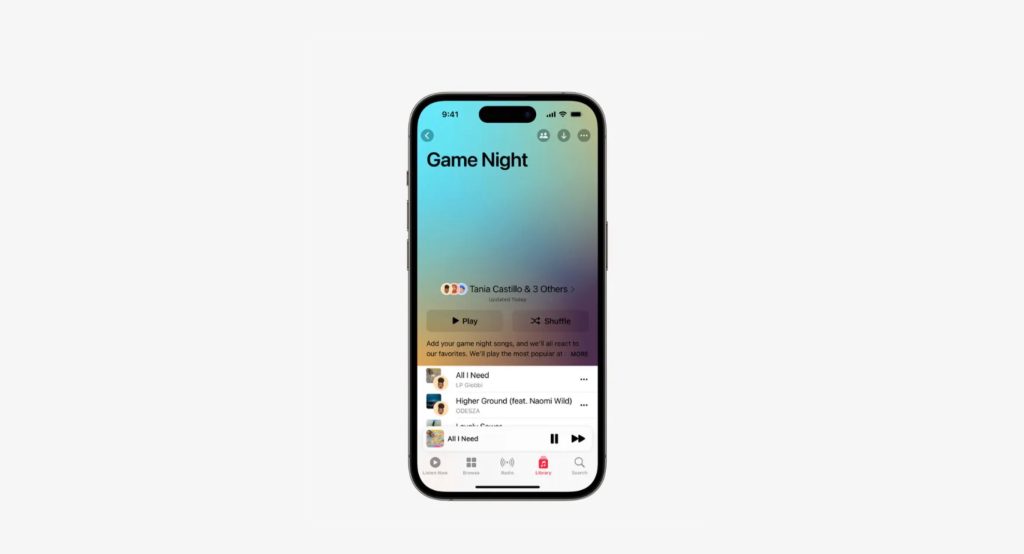
The Music app has been revamped with support for collaborative playlists and cross-fade (at long last). In CarPlay, the Music app now includes SharePlay support to let anyone in your car have a say in what’s currently playing (if you’re brave enough to allow such a thing).
Another tentpole change in iOS 17 is a major revamp of autocorrect, which Apple says will finally let you say what you “ducking” want to say. Powered by machine learning, the new autocorrect system learns from the way you type, makes it easier to correct mistakes, and even auto-fills your words and sentences as you’re typing. Dictation has also been upgraded with a new speech recognition model “to make it even more accurate,” Apple says.

StandBy is one of the most notable changes for iPhone users this year. When you place your iPhone horizontally on a charger, it will show a new custom smart display style interface with glanceable widgets for things like the time, calendar, alarms, and more.
For fans of Home Screen widgets, iOS 17 includes a big update with support for interactive widgets. This means you can now interact directly with widgets themselves, rather than having to be taken directly to the app itself. For example, you can interact with play and pause controls for the Music app widget right on your iPhone’s Home Screen. In conjunction with this, Apple has also added Home app widgets for the first time as well.
iOS 17 includes a number of Accessibility upgrades, such as Assistive Access. This is a new customizable interface that makes it easier for users with cognitive disabilities to use their iPhone. Personal Voice gives users at risk of speech loss, such as those with ALS, the ability to create a voice that sounds like theirs. Live Speech is a new feature that offers nonspeaking users the option to type and have their words spoken in person, in phone calls, or in FaceTime calls.
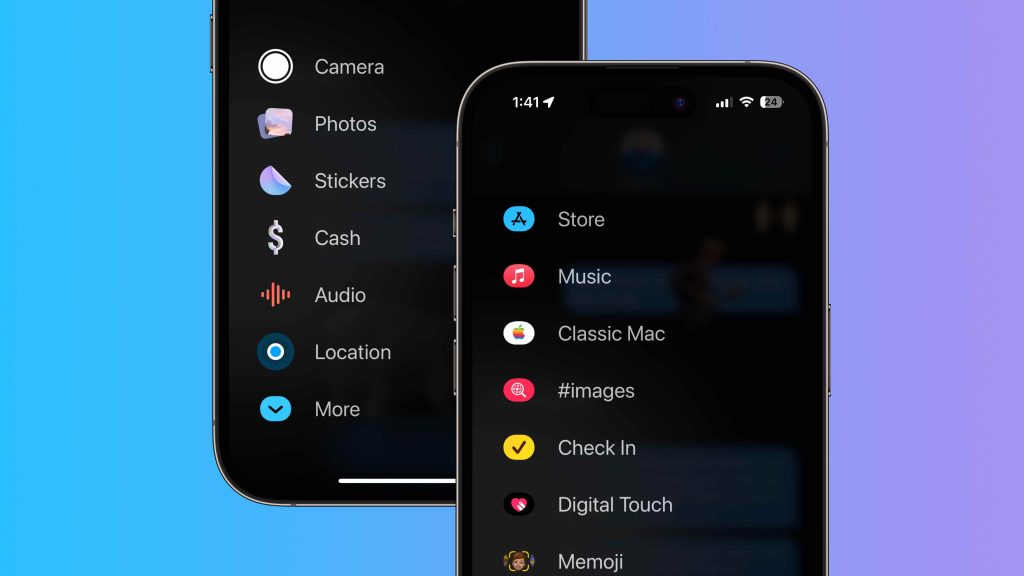
The Messages app in iOS 17 is also getting a major boost with new features for stickers, reactions, and more.
- The interface for iMessage apps has been overhauled with easy access to things like the camera, the Photos app, location sharing, GIFs, and more.
- Audio messages are now transcribed automatically, so you don’t have to listen to your friend ramble for two minutes.
- Stickers have been revamped, with Apple turning all emoji into Stickers and allowing you to create your own Stickers using your own photos. Stickers can be used in Messages, as Tapbacks, and much more.
- The Messages app includes upgraded search functionality with support for search filters.
- It’s easier to reply to a specific message by swiping right on it, instead of long-pressing.
Apple’s robust set of features of managing two-factor authentication codes is also getting an upgrade with iOS 17. This year, two-factor codes that are sent to Mail will also now support auto-fill. The Messages app will also now automatically delete 2FA text messages.
Top comment by Steve Halt
I might be interested in logging my mood for a couple of weeks, if I remember where that mood logging option is that is. All the rest is of no use for me personally.
Combining the features of Messages and Find My is a new feature called Check In, which Apple says is an “important feature for when a user wants to notify a family member or friend that they have made it to their destination safely.” When Check In is initiated, your friend or family member will automatically be notified when you arrive at your destination. If you’re not making progress to that destination, iOS 17 will share information such as your location, battery level, and cell service status with the other person.
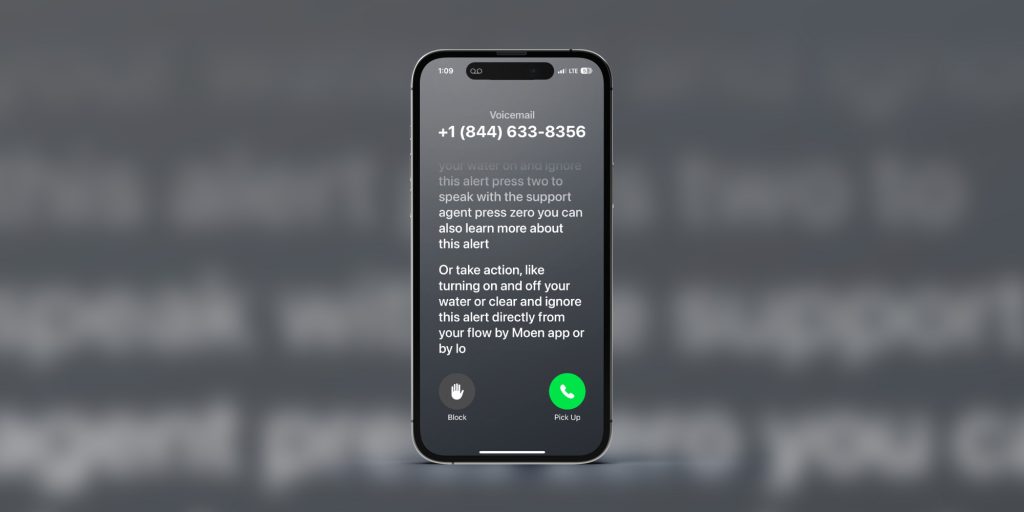
Live Voicemail in iOS 17 lets you see the real-time transcription as someone leaves a voicemail, including the ability to pick up the call while the person is leaving their message. Calls identified as spam by carriers won’t appear as Live Voicemail, and will instead be instantly declined.
iOS 17 will also include a brand new Journal app later this year. Using the Journal app, Apple says that iPhone users will have a new way to “appreciate life and preserve memories.” The Journal app in iOS 17 will use machine learning to create suggestions of moments that you might want to remember. The app will prompt you to journal based on things like photos, music, workouts, and more.
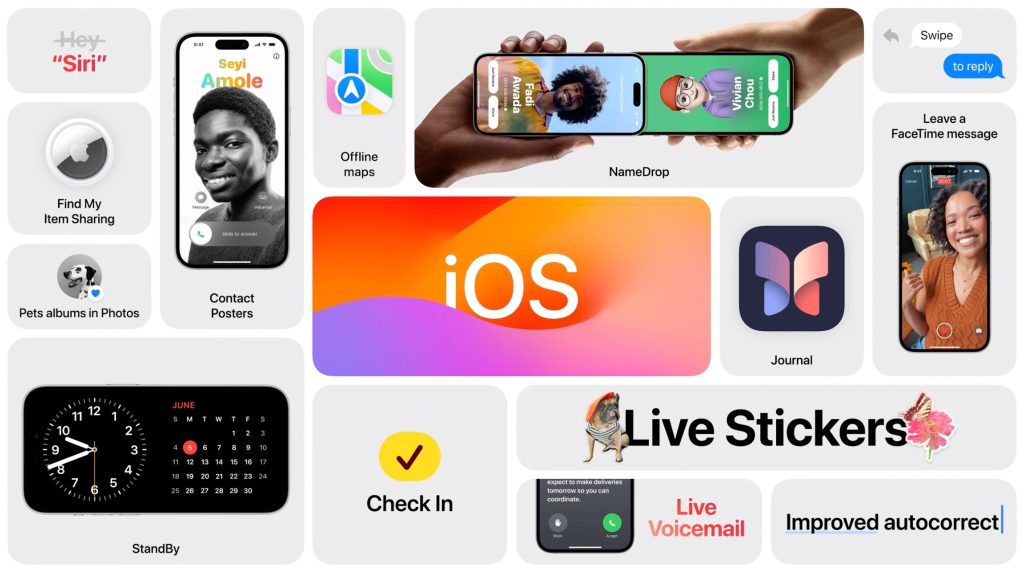
Here’s a rundown of even more changes in iOS 17 for iPhone users this year:
- New features for Private Browsing, including the ability to lock tabs behind Face ID or Touch ID.
- Passwords and passkeys stored in iCloud Keychain can now be shared with friends and family.
- Apple Maps is adding offline maps support and real-time availability information for electric car charging stations.
- The Health app now offers robust mental health features, including the ability to log your daily mood and momentary emotions.
- Screen Distance is a new feature in iOS 17 that Apple says will help reduce the risk of myopia for children by making sure kids aren’t holding their devices too close to their faces.
- AirTags can now be shared with up to five other people. This also works with all other Find My network accessories.
- AirPlay is smarter and now uses on-device intelligence to learn more about how you interact with AirPlay-enabled devices. Apple is also working to expand the availability of AirPlay at hotels, starting with a partnership with LG.
- The Notes app now offers inner-note linking, so you can link from one Apple Note to another.
- Siri can now be activated by simply saying “Siri,” rather than “Hey Siri.”
- AirPods now offer Adaptive Audio, Personalized Volume, Conversation Awareness, and improvements to Automatic Switching and call controls.
- Visual Look Up now works in videos, along with the ability to recognize new things like food, storefronts, signs, symbols, and more.
- The Reminders app can now automatically group items that you add to your grocery list by categories, such as fruits, vegetables, drinks, meats, and more.
- The Photos app can now recognize cats and dogs as their own person. For instance, if you have two dogs named Blake and Ruby, the Photos app will automatically separate the pictures for each of them into their own albums.
More coverage of iOS 17
- iOS 17 drops the ‘Hey’ for Siri commands, but here’s how to disable it – 9to5Mac
- Personal Voice on iPhone: Set up in iOS 17 – 9to5Mac
- iOS 17 will add support for recurring payments to Apple Cash – 9to5Mac
- iOS 17: How to download and use offline maps with Apple Maps – 9to5Mac
- Apple adds pronoun fields with privacy focus to Contacts app on iOS 17 – 9to5Mac
- Download the new iOS 17 wallpaper right here
- iOS 17 adds real-time charging availability info for EV drivers – 9to5Mac
- Apple says it has fixed iPhone autocorrect with iOS 17 – 9to5Mac
- iOS 17 drops support for iPhone 8 and X
- Apple’s most expensive AirPods miss out on Adaptive Audio, ‘Siri’ command, and more – 9to5Mac
- iOS 17 finally makes it easier to scan and tap QR codes – 9to5Mac
- CarPlay in iOS 17: Apple Music SharePlay, design updates, new wallpaper – 9to5Mac
- iOS 17: Apple Notes adds a hard-to-find way to link other notes, wiki style – 9to5Mac
- iOS 17 DockKit API integrates camera apps with motorized stands
- Share passwords on iPhone: How to in iOS 17 – 9to5Mac
- Reminders in iOS 17 realizes it’s the best shopping list – 9to5Mac
- Hands-on: iOS 17 adds interactive widgets for the Home app – 9to5Mac
- iPhone Messages stickers: How to make and use them – 9to5Mac
- Ping My Watch comes to iPhone in iOS 17 – 9to5Mac
- How to auto delete iPhone verification codes – 9to5Mac
- iOS 17 and macOS Sonoma automatically generates Apple ID passkeys, now available on Apple․com and iCloud․com – 9to5Mac
- Five important iOS 17 security features coming to iPhone
FTC: We use income earning auto affiliate links. More.



Comments